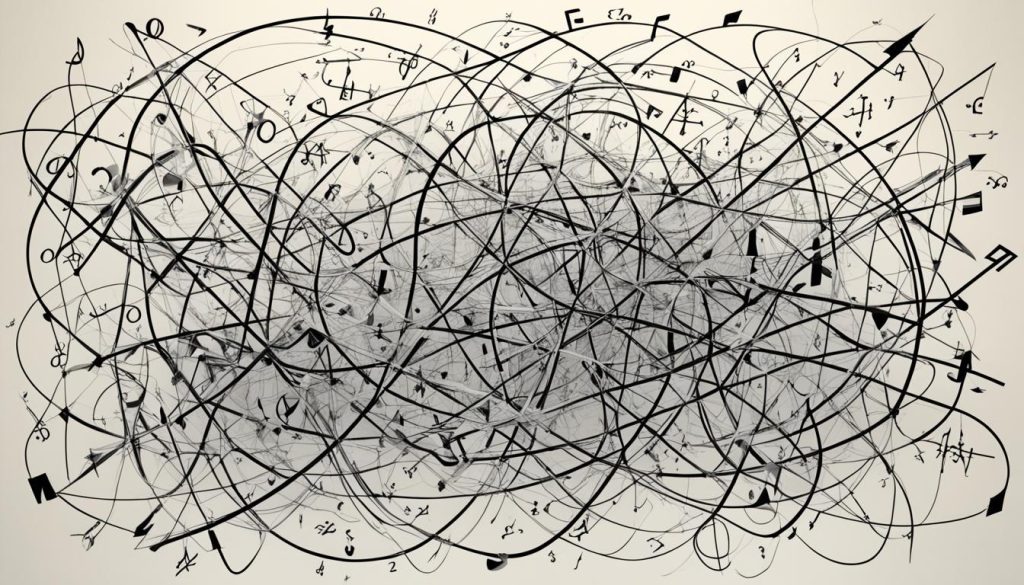Neural networks have revolutionized the field of artificial intelligence (AI), enabling machines to perform complex tasks like image recognition, natural language processing, and speech synthesis. However, when it comes to mathematical operations and reasoning, neural networks face challenges. They struggle with processing categorical values and performing specific calculations, limiting their potential for sophisticated data interpretation.
Enter Neural Arithmetic Logic Units (NALU), a groundbreaking solution that bridges the gap between neural networks and mathematical reasoning. The NALU is a specialized neural network architecture designed to automate mathematical relationships, enhancing AI’s capacity to perform mathematical operations and interpret numerical data more effectively.
While the original NALU brought significant advancements, it still had limitations in terms of extrapolation and reliable division. To address these challenges, an improved version called the iNALU was developed.
The iNALU overcomes the limitations of the original model by introducing additional paths for multiplication and division with mixed-signed inputs. It also utilizes an input independent implementation of the gate, boosting the precision of arithmetic tasks and improving the network’s ability to calculate with negative and positive inputs. These enhancements make the iNALU an invaluable tool for AI systems, enabling them to perform more complex numerical functions and extrapolate numerical relationships more effectively.
By combining sophisticated mathematical reasoning with AI, Neural Arithmetic Logic Units like the iNALU open doors to a wide range of applications in fields such as finance, intrusion detection, and other areas that require advanced data interpretation. With the iNALU, AI systems can excel in handling complex mathematical operations, paving the way for even more groundbreaking advancements in the future.
The Neural Arithmetic Logic Unit (NALU)
The Neural Arithmetic Logic Unit (NALU) is a specialized neural network architecture designed to perform various mathematical operations. It offers a powerful solution for incorporating mathematical reasoning into artificial intelligence systems.
The NALU consists of two essential components: the multiplicative path and the summative path. The multiplicative path, similar to a linear layer, is responsible for capturing the multiplicative relationships between input values. The weights of this path are constrained within the range of -1 to 1, enabling the network to learn multiplication effectively.
The summative path, on the other hand, handles addition and subtraction operations. It complements the multiplicative path by providing the network with the capability to perform arithmetic tasks that involve summation and subtraction of values.
While the NALU demonstrates remarkable proficiency in addition and subtraction tasks, it encounters challenges when it comes to multiplication and division operations. These limitations hinder its ability to perform complex mathematical computations accurately.
To overcome these limitations, researchers proposed an improved version of the NALU, known as the iNALU. The iNALU introduces additional pathways specifically tailored for multiplication and division, allowing the network to handle mixed-signed inputs with precision. It also incorporates an input independent implementation of the gate, enhancing the network’s ability to perform mathematical operations effectively.
By expanding the NALU’s capabilities in handling multiplication and division tasks, the iNALU significantly enhances the precision and accuracy of arithmetic operations performed by AI systems. This improvement opens up new possibilities for AI applications in various fields that require sophisticated mathematical reasoning.
Example Usage:
One practical example of the NALU’s application is in financial analysis. Companies can utilize AI systems powered by the NALU to perform complex calculations involving revenue projections, cost evaluations, and investment strategies. By incorporating the iNALU, these AI systems can provide more accurate financial predictions and recommendations, aiding organizations in making informed business decisions.
Benefits of the NALU:
- Enhanced mathematical reasoning abilities
- Precision in multiplication and division operations
- Improved accuracy in arithmetic tasks
- Expanded potential for AI applications in various fields
The NALU and its improved variant, the iNALU, are significant advancements in incorporating mathematical reasoning into AI systems. These architectures enable AI systems to perform complex mathematical operations with increased accuracy and precision, enhancing their overall capabilities in data interpretation and analysis.
| NALU | iNALU | |
|---|---|---|
| Ability to learn addition and subtraction | ✓ | ✓ |
| Ability to learn multiplication and division | ✓ | ✓ |
| Handling of mixed-signed inputs | X | ✓ |
| Input independent gate implementation | X | ✓ |
Challenges in Mathematical Reasoning with Neural Networks
While neural networks are powerful tools for machine learning, they face challenges in mathematical reasoning. One of the primary challenges is extrapolation, where neural networks struggle to generalize beyond the range of training data. This is particularly problematic in tasks that involve complex mathematical operations. Additionally, neural networks with non-linear activation functions have limited ability to extrapolate numerical relationships. These limitations hinder their ability to perform mathematical reasoning tasks effectively. The NALU was introduced to address some of these challenges, but it still has limitations that need to be overcome. The iNALU aims to improve the extrapolation results of the NALU and enhance its capacity for mathematical reasoning.
One of the key challenges in mathematical reasoning with neural networks is the ability to extrapolate beyond the range of training data. Neural networks are trained on a specific dataset, and they learn to make predictions based on the patterns and relationships within that dataset. However, when faced with data outside of this range, neural networks often struggle to make accurate predictions. This is particularly problematic in mathematical reasoning tasks that involve complex operations or require the generalization of patterns.
Another challenge arises from the use of non-linear activation functions in neural networks. Non-linear activation functions are essential for capturing complex relationships, but they limit the network’s ability to extrapolate numerical relationships reliably. For example, in a simple addition task, a neural network may perform well within the range of training data but fail to accurately predict the result when faced with values outside of that range.
The NALU was introduced as a solution to address some of these challenges in neural network-based mathematical reasoning. However, the NALU itself has its limitations. While it can effectively perform addition and subtraction, it struggles with multiplication and division operations. This is a significant drawback, as multiplication and division are fundamental mathematical operations that are prevalent in various real-world scenarios.
To overcome these limitations, researchers proposed the iNALU, an improved version of the NALU. The iNALU expands upon the capabilities of the NALU by introducing additional paths for multiplication and division with mixed-signed inputs. This enhancement allows the iNALU to perform mixed-signed multiplication and improve the extrapolation results of the network. Additionally, an input-independent implementation of the gate is incorporated, providing better control over the summative and multiplicative paths.
The iNALU addresses the challenges faced by neural networks in mathematical reasoning by enhancing its extrapolation capabilities and enabling precise mixed-signed multiplication. These improvements have the potential to significantly enhance the performance of neural networks in tasks that involve complex mathematical operations and require accurate extrapolation beyond the range of training data.

| Challenges in Mathematical Reasoning with Neural Networks | Solutions |
|---|---|
| Extrapolation beyond the range of training data | iNALU introduces improved extrapolation capabilities |
| Limited ability to extrapolate numerical relationships | iNALU enables precise mixed-signed multiplication |
| Struggles with multiplication and division operations | iNALU introduces additional paths for multiplication and division |
| Non-linear activation functions hinder extrapolation | iNALU incorporates input-independent implementation of the gate |
Improved Neural Arithmetic Logic Unit (iNALU)
The Improved Neural Arithmetic Logic Unit (iNALU) is an enhanced version of the Neural Arithmetic Logic Unit (NALU) that addresses the limitations of the original model. It introduces improvements in extrapolation, mixed-signed multiplication, and precision, making it a valuable tool for mathematical reasoning tasks in AI applications.
The iNALU tackles the challenge of extrapolation by improving the network’s ability to generalize beyond the range of training data. By introducing additional paths for multiplication and division with mixed-signed inputs, the iNALU enables more accurate predictions even with negative values. This enhanced flexibility allows for finer control and a wider range of mathematical operations.
One of the key enhancements in the iNALU is the implementation of an input independent gate. This feature ensures better regulation of the summative and multiplicative paths, improving the precision of calculations. The regularization incorporated into the training procedure prevents unwanted combinations of mathematical operations, further enhancing the iNALU’s overall performance.
The iNALU also tackles the issue of large values in deep networks with several hidden layers by introducing a maximum function. This function limits the output values, preventing them from becoming excessively large and potentially causing numerical instability.
Experimental evaluations of the iNALU demonstrate its improved performance in various arithmetic tasks, including minimal arithmetic, one-layer calculations, and simple function learning. These evaluations validate the effectiveness of the iNALU in enhancing mathematical reasoning capabilities and highlight its potential for broader application in AI systems.
The iNALU represents a significant step forward in leveraging neural networks for mathematical reasoning tasks. By overcoming the limitations of the NALU and introducing new features to enhance precision and extrapolation, the iNALU opens up new possibilities for AI in sectors such as finance, intrusion detection, and other domains that require advanced mathematical reasoning capabilities.

Conclusion
The Neural Arithmetic Logic Units (NALU) and its improved variant, the iNALU, have significantly advanced AI’s capability for mathematical reasoning and data interpretation. These powerful architectures successfully tackle the challenges faced by neural networks in fundamental mathematical operations and extrapolation tasks. By enhancing precision, enabling mixed-signed multiplication, and improving extrapolation results, the iNALU outshines the original NALU, becoming an indispensable tool for machine learning tasks that involve mathematical reasoning.
Thanks to the iNALU, AI systems can now perform more intricate numerical functions and more effectively extrapolate numerical relationships. This breakthrough has unlocked fresh possibilities for applying AI in various fields, such as finance, intrusion detection, and other areas that heavily rely on mathematical reasoning. With the iNALU’s advanced capabilities, AI is poised to make significant advancements in complex data interpretation and mathematical reasoning tasks.
The Neural Arithmetic Logic Units have revolutionized how AI processes mathematical operations, empowering it to perform sophisticated calculations and recognize intricate numerical patterns. The iNALU’s improvements in precision and extrapolation capabilities position it as a game-changer in the field of mathematical reasoning. As AI continues to evolve, the iNALU’s cutting-edge technology will undoubtedly shape the future of machine learning and data analysis, enabling AI systems to tackle increasingly complex mathematical tasks with ease and precision.
FAQ
What are Neural Arithmetic Logic Units (NALU)?
Neural Arithmetic Logic Units (NALU) are a type of neural network architecture designed to perform mathematical operations.
What is the difference between NALU and iNALU?
The iNALU is an improved version of the NALU that addresses the limitations of the original model. It introduces additional paths for multiplication and division with mixed-signed inputs, improves extrapolation results, and enables mixed-signed multiplication with negative values.
What challenges do neural networks face in mathematical reasoning?
Neural networks struggle with extrapolation, which is the ability to generalize beyond the range of training data. This limitation hinders their ability to perform complex mathematical operations effectively.
How does the iNALU address the limitations of the original NALU?
The iNALU introduces additional paths for multiplication and division with mixed-signed inputs, improves extrapolation results, and implements an input independent implementation of the gate. These enhancements enable the iNALU to perform better in mathematical reasoning tasks.
What are the applications of Neural Arithmetic Logic Units (NALU) and iNALU?
Neural Arithmetic Logic Units and their improved variant, the iNALU, enhance AI’s capacity for mathematical reasoning and data interpretation. They find applications in fields such as finance, intrusion detection, and other areas that require mathematical reasoning.



















